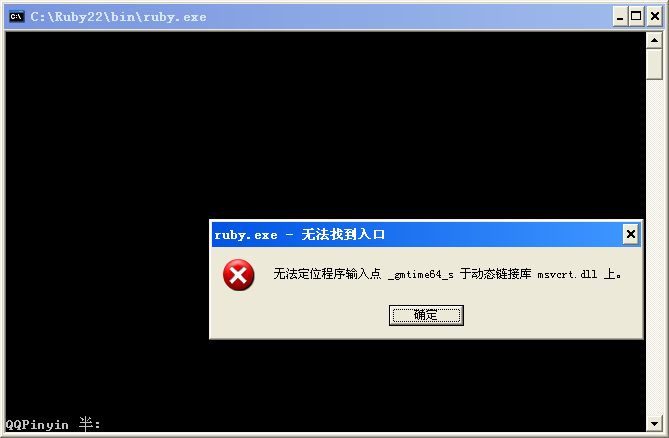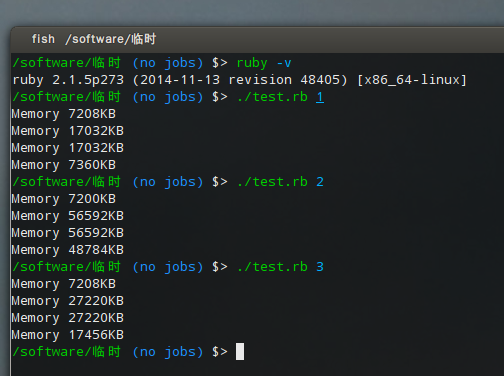Ruby Ruby 的内存陷阱
Topic has been selected as the excellent topic by the admin.
Ruby 有一套自动的内存管理机制。这在大多数情况下是不错的,但是有时它却是个麻烦。
Ruby 的内存管理既简洁又笨重。它将对象(名为 RVALUE)存储在大约有 16KB 大小的堆中。
从底层上,RVALUE 是一个 C 的结构体,它包含了一个共同体表示不同的标准 ruby 对象。
因此在堆中存储着大小不超过 40 字节的 RVALUE 对象,如 String、Array、Hash等。
这意味着小的对象在堆中很合适,但是一旦它们达到到阈值,那么就需要在 Ruby 的堆之外再分配一片额外的内存。
这块额外的内存空间是灵活的。一旦对象被垃圾回收了它就会被释放掉。但是堆本身的内存是不会被释放给操作系统的。
让我们来看一个简单的例子:
def report
puts 'Memory ' + `ps ax -o pid,rss | grep -E "^[[:space:]]*#{$$}"`
.strip.split.map(&:to_i)[1].to_s + 'KB'
end
report
big_var = " " * 10_000_000
report
big_var = nil
report
ObjectSpace.garbage_collect
sleep 1
report
# ⇒ Memory 11788KB
# ⇒ Memory 65188KB
# ⇒ Memory 65188KB
# ⇒ Memory 11788KB
这里我们分配了大量的内存,使用完后又释放给操作系统。这一切看起来似乎没有问题。现在让我们稍微修改一下代码:
- big_var = " " * 10_000_000
+ big_var = 1_000_000.times.map(&:to_s)
这只是一个简单的修改,不是吗。但是结果:
# ⇒ Memory 11788KB
# ⇒ Memory 65188KB
# ⇒ Memory 65188KB
# ⇒ Memory 57448KB
怎么回事?内存没有释放归还给操作系统。这是因为数组中的每个元素符合 RVALUE 的大小并存储在 ruby 的堆中。
在大多情况下这是正常的。现在 ruby 堆中多了许多空的位置,再次运行代码将不会再消耗额外的内存了。
每次我们处理 big_var 和一些空的堆时, GC[:heap_used]的值果然减小了。
对于这些操作 Ruby 是早有准备,注意这里是 Ruby 而不是操作系统。
因此,对于创建大量的符合 40 个字节的临时变量就要注意了:
big_var = " " * 10_000_000
big_var.gsub(/\s/) { |c| '-' }
结果同样是 Ruby 的内存疯狂增长,并且这部分内存在程序运行期间是不会归还给操作系统的:
# ⇒ Memory 10156KB
# ⇒ Memory 13788KB
# ⇒ Memory 13788KB
# ⇒ Memory 12808KB
这个问题不是太重要,稍微注意一下即可。
No reference

 这是我的结果,第三点和楼主说的还是比较有区别的,第三个测试我这里回收了很多内存。
这是我的结果,第三点和楼主说的还是比较有区别的,第三个测试我这里回收了很多内存。